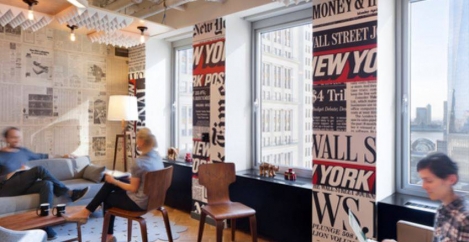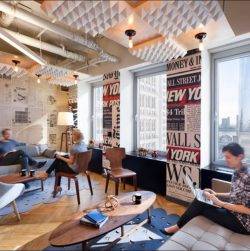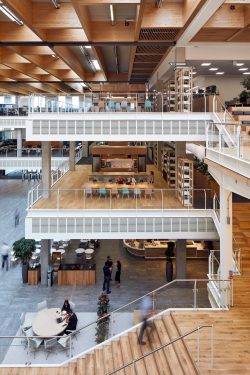December 21, 2018
The ten most read stories on Workplace Insight for 2018
We can’t help but feel that the world caught up with us a bit during 2018. We’ve been talking about the intersection of people, place and tech since we started up five years ago. Of course, we weren’t even the first to do this. As we’ve always acknowledged, we’re standing on the shoulders of the giants who first recognised what was happening a quarter of a century ago. Many of the ‘trends’ with which we are presented are nothing more than the crystallisation of ideas first expressed by people in the 20th Century. They seldom get their due.
The following list tells its own stories about where we are. The big news of the year in the UK was the British Institute of Facilities Management’s change of name and identity to the Institute of Workplace and Facilities Management. This is an obvious reflection of where the relevant sector – or sectors – currently are with regard to the issue of providing people with somewhere to work. It is also an acknowledgement that this somewhere is no longer rigidly physical and temporal. This has been coming for some time, but as Hemingway put it about a different matter, the workplace discipline has arrived in two ways; ‘gradually and then suddenly’.
So it’s no surprise that the issues that dominate this list are those at the heart of this change. One other thing to note is that the three best read stories are by women. That is also something upon which we might reflect when at least two of the pillars of the new discipline – property and FM – are notoriously male dominated.
The following list does not include stories published in previous years which are still read widely, nor on our Events page which has evidently become a go-to resource for the sector.
1. Serena Borghero’s take on the role of workplace design in fostering engagement was read by over 12,000 people worldwide over the second half of 2018 and it’s easy to see why. It touches on two of the most important challenges of the 21st Century workplace. How do you get people to feel a connection to what they do? And how do you create a space for them that is the best place to work in an era in which they can work anywhere?
2. Second up is Max Luff’s look at the adoption of activity based working in Australia. It’s clear that Australia and New Zealand have something to teach the rest of the world about the design of contemporary workplaces and related issues such as wellbeing.
3. Next is a welcome challenge from Caroline Burns to one of the most common assumptions people make about workplace design in the current era, namely that aping the design characteristics of a Google office creates the same cultural conditions enjoyed by Google. Things are not that simple, she concludes.
4. Christopher Diming makes a related plea for organisations to learn some lessons from anthropology as they seek to pick their way through messy workplace challenges, not least how to make the much demonised idea of the open plan work for people in practice.
5. My own piece on the direction of travel for the workplace, based on a chapter of mine in a recent book, argues that we shouldn’t assume there is a final destination – the office of the future as it is often referred to – but only the journey.
6. The book was edited by Derek Clements Croome, who was a speaker at the event hosted by Arup which became a very widely read news story about biophilic design. The fascination with this subject shows no sign of abating, tied up as it is with two of the most widely talked about workplace challenges – wellbeing and productivity.
7. Another news story, this time based on a report from the Gensler Research Institute which highlighted how contemporary workplace trends, far from driving people away from the physical office, can actually entice them back to the embrace of the corporate bosom.
8. This wouldn’t be a list of the most popular workplace issues of 2018 without at least one feature about coworking and our most widely read take on the subject this year came from Gary Chandler, who pondered the response of the commercial property sector to the rise of the new model.
 9. Disruption was also the theme of this piece from Anthony Brown, which makes the point that there is nothing new about the forces of creative destruction reshaping the workplace. They’ve been around for centuries and we have always adapted to them.
9. Disruption was also the theme of this piece from Anthony Brown, which makes the point that there is nothing new about the forces of creative destruction reshaping the workplace. They’ve been around for centuries and we have always adapted to them.
10. Finally my views on the tedious taxonomical debate that emerged in the wake of BIFM’s announcement of an identity change, and a plea that the change should see the FM discipline put aside its parochial spat and embrace the new era.

















